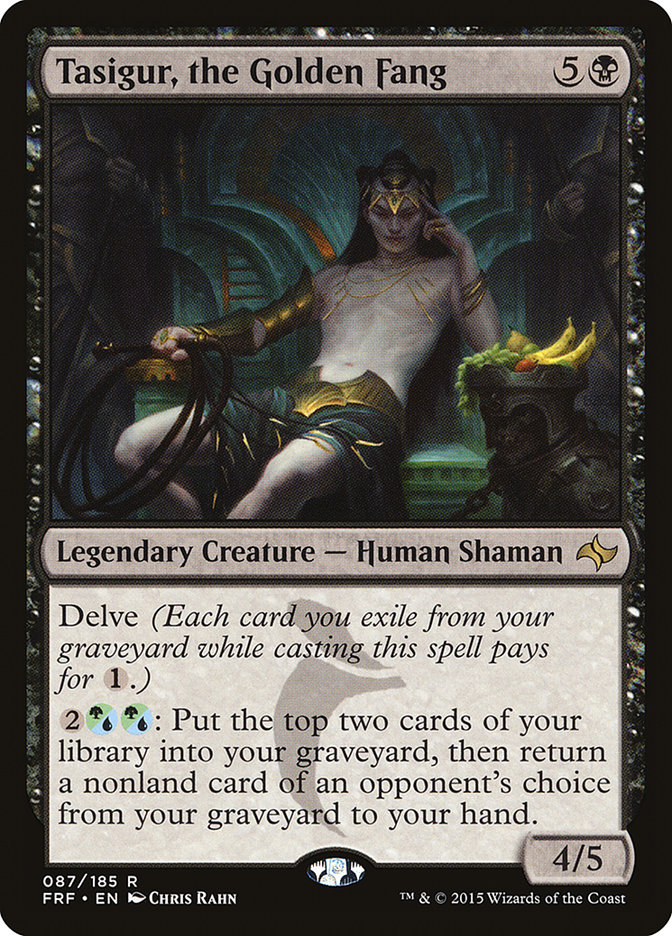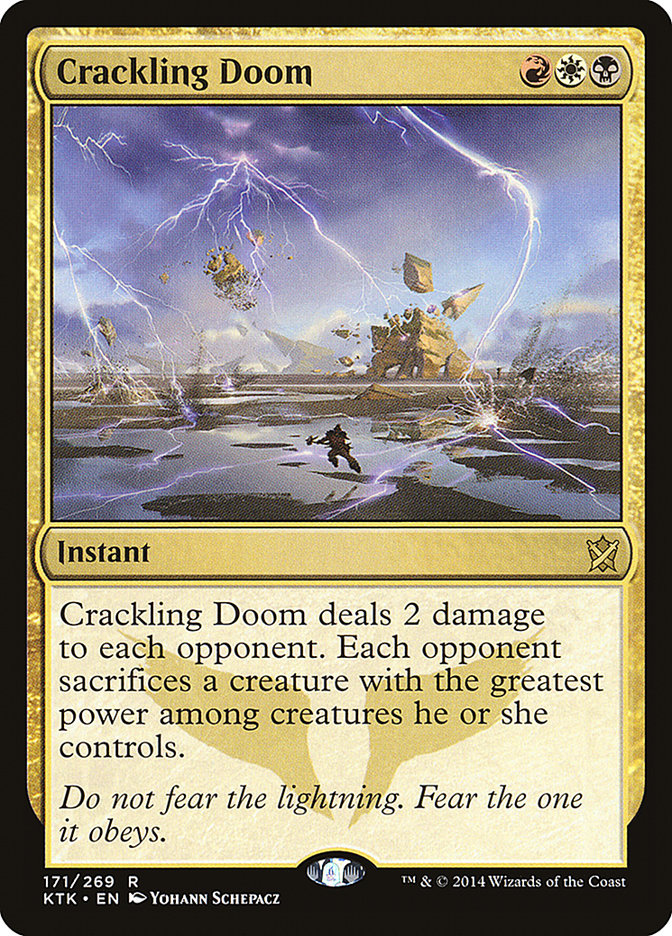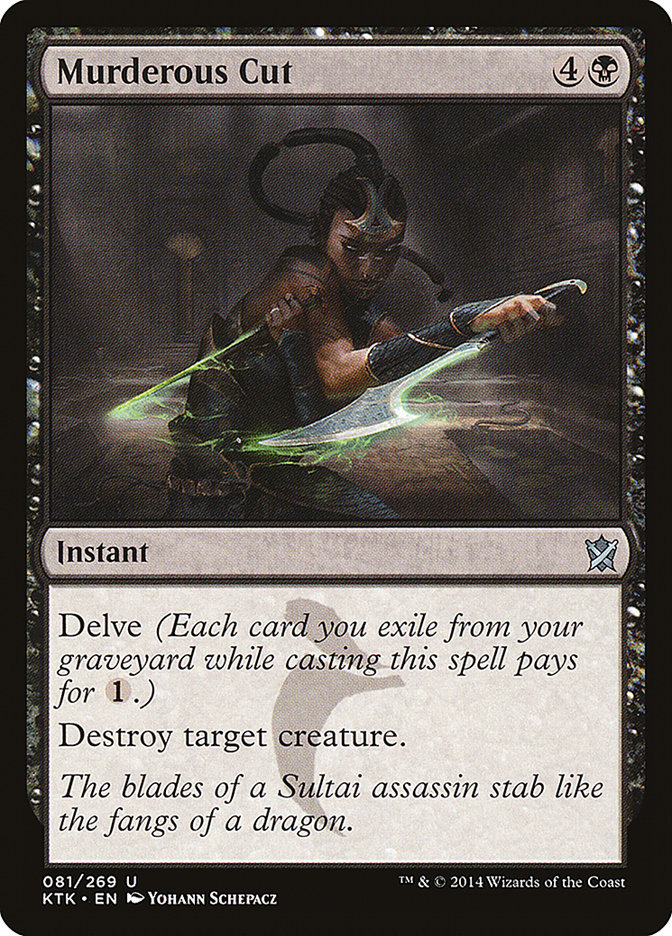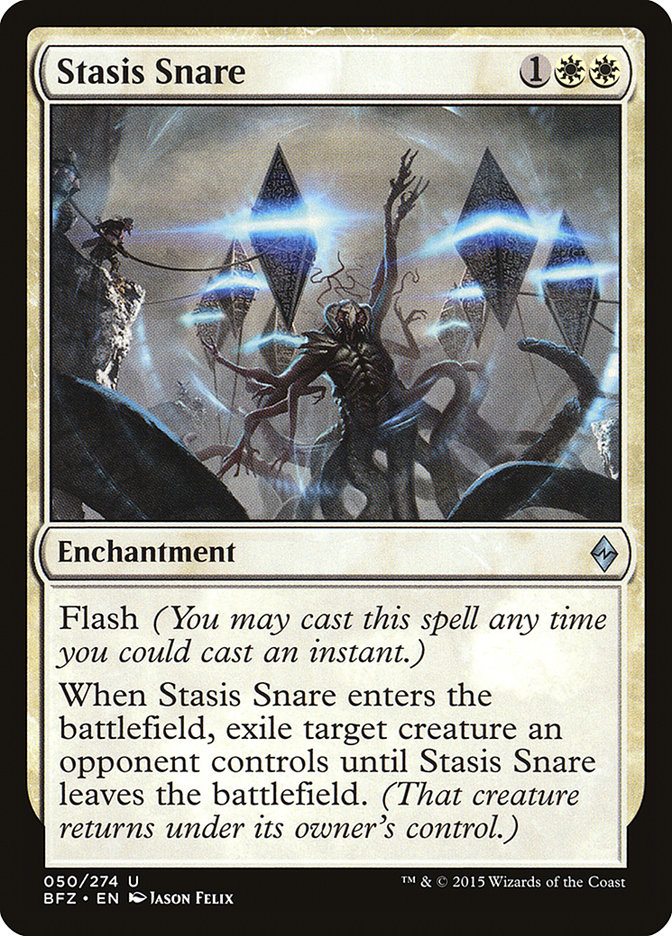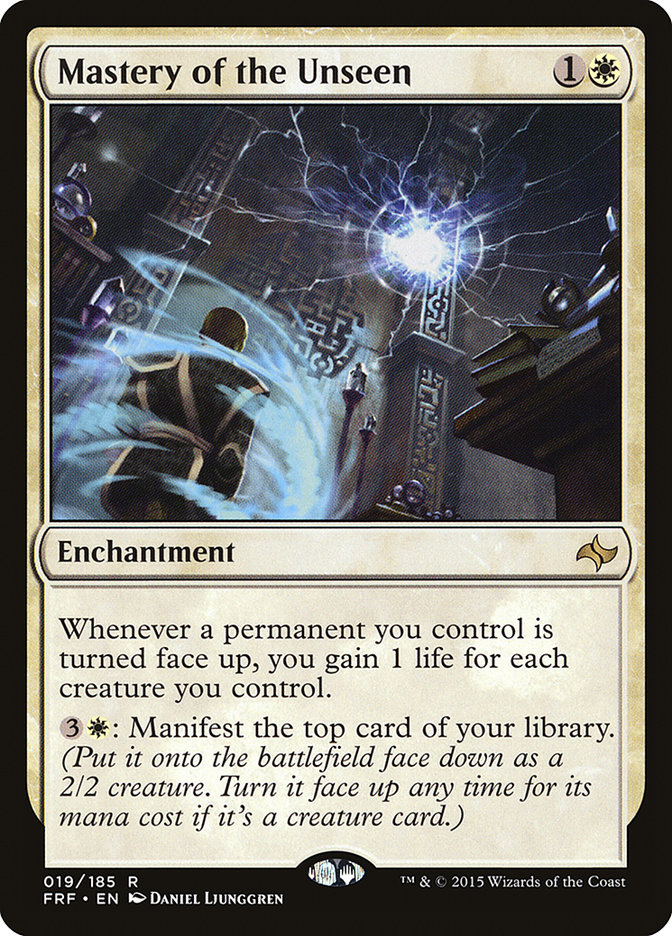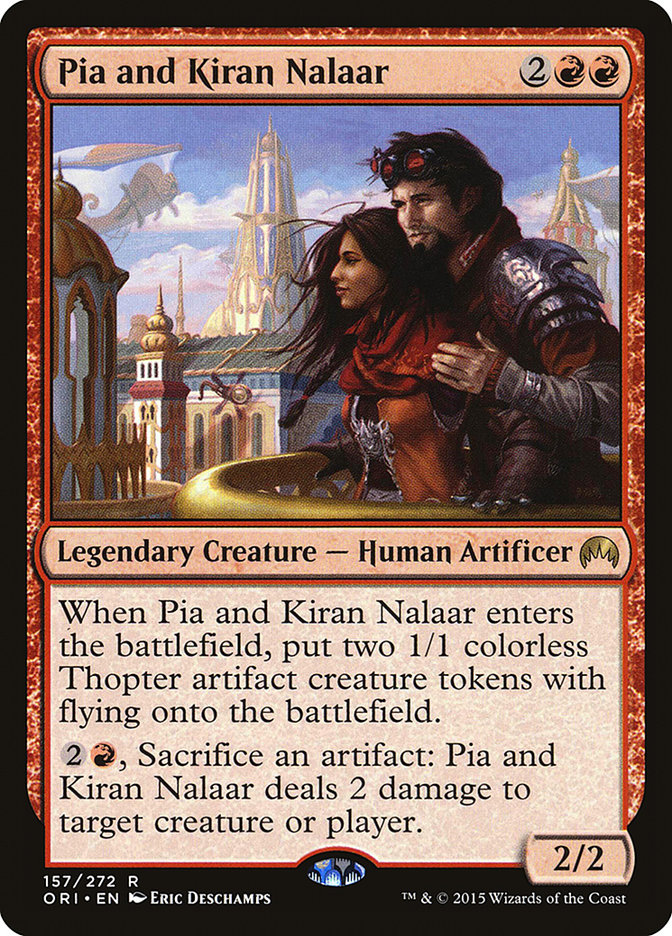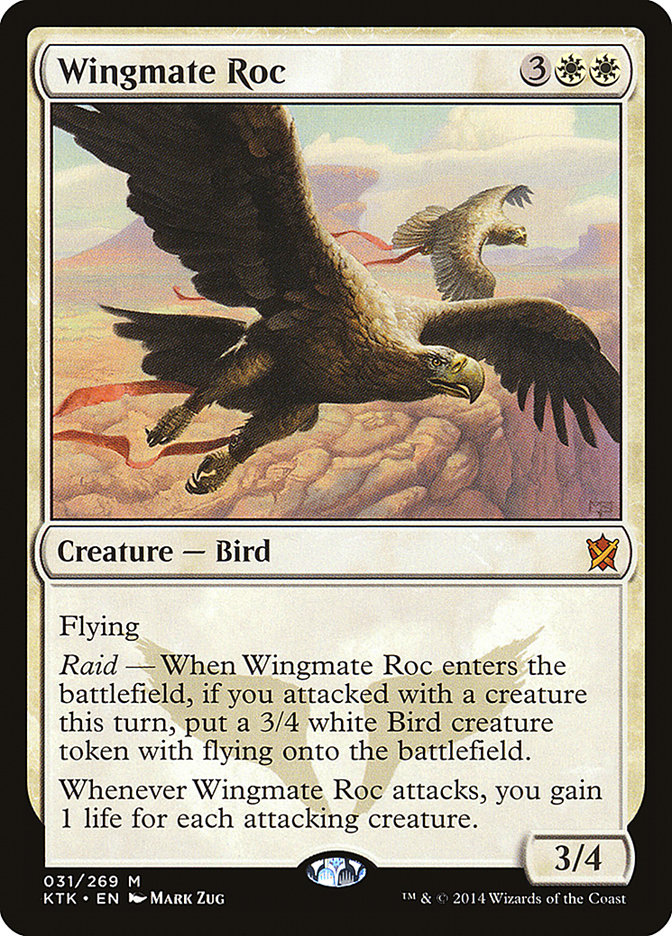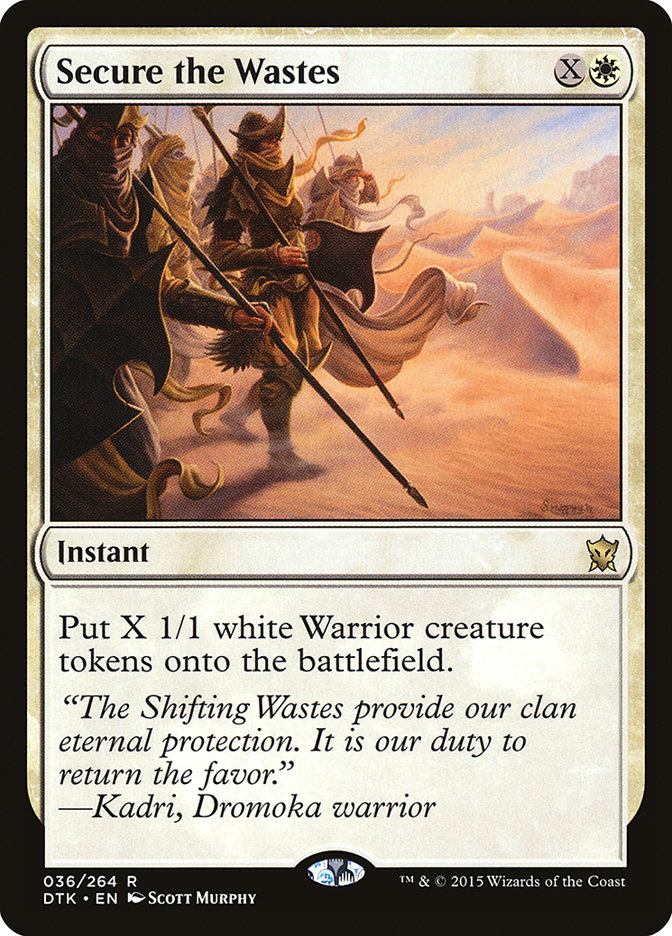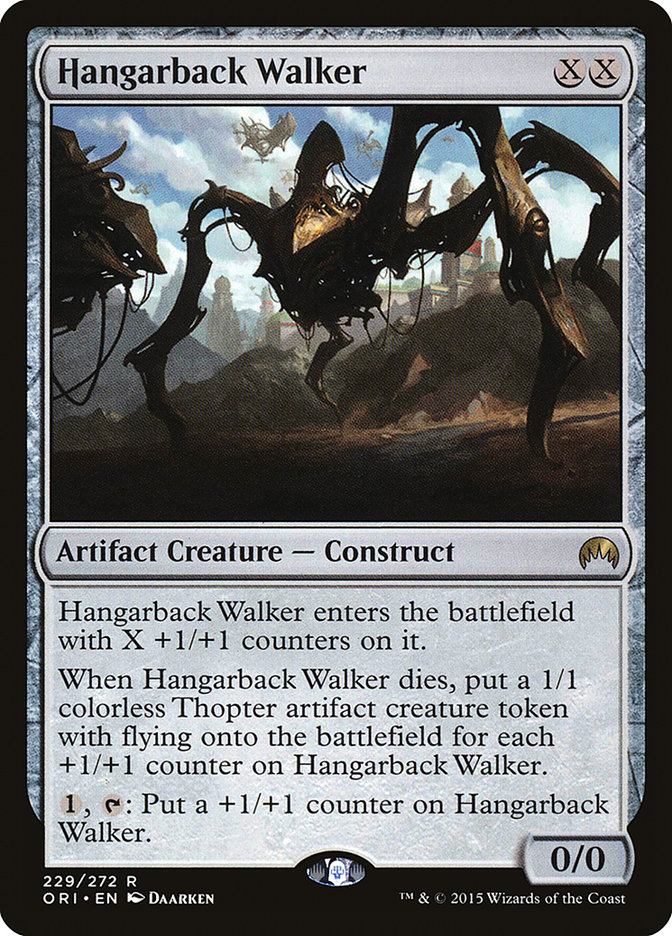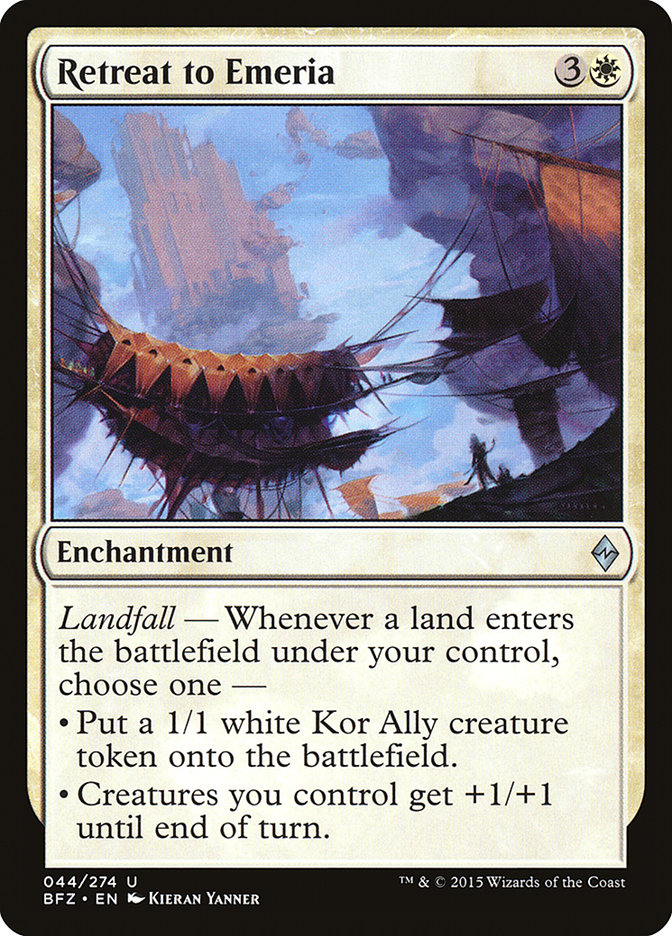The evolution of the Standard metagame is a funny thing. The first real foray into the depths of the new format these days always comes in the form of an
Open Series weekend, which shapes what players expect to play against at the Pro Tour. The Pro Tour itself unveils new strategies, built and tuned by pro
teams, which are then released upon the Magic tournament community as a whole.
And while one player is always crowned the champion when the Pro Tour is over, it is not always the winning deck from that event that goes on to make the
biggest splash in the outside world. The finals of Pro Tour Battle for Zendikar looked like a rehash of last year’s Pro Tour Khans of Tarkir finals, with
Abzan vs Jeskai decks whose biggest differences seemed to be their lands. While Abzan ultimately came out on top there, Grand Prix Quebec City this past
weekend painted a very different picture of the format.
That picture was one of the dominance of Jeskai Black, with the deck making up nearly half of the Top 8, including both of the finalists:
Creatures (14)
- 1 Dragonmaster Outcast
- 4 Mantis Rider
- 2 Soulfire Grand Master
- 3 Tasigur, the Golden Fang
- 4 Jace, Vryn's Prodigy
Planeswalkers (1)
Lands (26)
Spells (19)
- 2 Dispel
- 4 Crackling Doom
- 1 Utter End
- 2 Dig Through Time
- 2 Wild Slash
- 3 Ojutai's Command
- 2 Kolaghan's Command
- 3 Fiery Impulse
Sideboard

While pre-Pro Tour versions of Jeskai Black leaned heavily on cards like Treasure Cruise and Dig Through Time, the consensus best list now, played by Jon
Finkel and Owen Turtenwald to Top 8 finishes at the Pro Tour, uses Tasigur, the Golden Fang as its primary delve spell of choice. Tasigur can provide not
only card advantage over time if it is allowed to remain on the battlefield but is also an incredibly efficient threat that can come down as early as the
third turn thanks to the full complement of fetchlands these decks play.
Tasigur joins Mantis Rider in offering an additional early threat, allowing the Jeskai Black decks to play a powerful proactive game much more often. One
of the biggest weaknesses of a deck like the more traditional Jeskai lists is that they lean so heavily on a small number of threats, and if they either
don’t draw those threats or they are dealt with, the deck ends up as nothing more than a collection of reactive spells. With Tasigur, however, Jeskai Black
is able to play a significant threat early in the game more often than not.
This is an important distinction, because having a threat on the battlefield dramatically increases the effectiveness of so many of Jeskai Black’s spells.
Cheap removal spells like Fiery Impulse and Wild Slash quickly lose their effectiveness in games that go long when creatures start outclassing them, so
they are at their best when you’re able to pair them with meaningful pressure. Crackling Doom isn’t a particularly efficient removal spell in most
circumstances, but when all you need to do is punch through one big creature to end the game with your attackers, it’s a great tool.
And we haven’t even started talking about Jace. There are many who tout Jace as the most powerful card in Standard, and he’s certainly up there on the
list. And Jace, too, is at his best when paired with powerful creatures–especially Tasigur. Not only can Tasigur protect your Jace from attackers once it
flips but thanks to delve, Tasigur can actually help you better control when you want to flip your Jace in the first place.
While the ability to effectively Flashback spells in your graveyard is certainly powerful, sometimes you’d rather keep Jace in his Vryn’s Prodigy form so
you can keep churning through your deck. Maybe you’re looking for a particular card, or maybe your opponent has a board that can easily kill your Jace if
you are forced to flip it. Thankfully, Tasigur’s delve cost can help strip your graveyard of cards so you can keep looting away to your heart’s content.
And if you can deal with Jace, Tasigur, and Mantis Rider? Well, there’s both Ojutai and Kolaghan’s Command to keep them coming back. Easier said than done,
friend.
That’s a whole lot of different angles of attack that Jeskai Black is able to muster; it’s no wonder that it had such a dominant performance at the Grand
Prix. What can we hope to do to beat it? Are there any cards out there that line up well against what Jeskai Black is trying to do?
Well, Hypothetical Question Man, I’m glad you asked. Here’s a look at some of the cards players ought to be looking at to beat Jeskai Black.
Duress is a card that has always seen a decent amount of play in sideboards of pretty much any Standard format in which it’s legal, but I think now might
be among the best it’s ever had it as a maindeck card. Even the most aggressive deck in the format, Atarka Red, relies heavily on spell-based combinations
to close out games. Duress helps clear the way of things like Ojutai’s Command or Crackling Doom to allow big creatures to actually stick, or even just rip
away Dig Through Time to prevent the Jeskai Black deck from reloading on cards.
Duress also happens to be great against the mana ramp of the G/R Eldrazi deck that had a breakout performance at the Grand Prix, not to mention Rally the
Ancestors, Abzan, or basically any control deck. I’m not sure I’d go so far as to play the full four copies in my maindeck, but I can certainly see going
as far as three–it seems that good right now.
This one may seem a little strange since it’s just an all-purpose removal spell, but it’s meant to highlight a point. One of the ways in which Jeskai Black
is able to gain edges is because of its efficient mana usage. It has a lot of cheap answers to pair with cheap threats, and it can force most opponents to
play from behind. The most notable of these cheap threats is Tasigur, since he can be played for as little as a single mana thanks to delve. This means
that he can easily be paired with either another threat or a removal spell, or even keeping up mana for something like Ojutai’s Command.
In order to fight against that kind of efficiency, it’s important to be efficient yourself. Murderous Cut is a great way for fetchland heavy decks to get
some value out of their graveyard as a resource that can enable powerful swing turns when you’re able to play multiple spells early in the game.
One of the biggest issues I had with the Mardu deck I played at the Pro Tour
was that it was very much a one spell per turn deck. Except in the very late stages of a game, I just had to spend pretty much all of my mana on whatever
it was I was doing for the turn and hope that it was better than what my opponent did. My deck felt like it was the most powerful when I was able to play
something like a Thunderbreak Regent or Sarhkan, the Dragonspeaker in the same turn I killed one of my opponent’s creatures with Murderous Cut.
It’s also worth noting that in addition to its potential efficiency, Murderous Cut has the benefit of being able to actually kill all of the threats in the
Jeskai Black deck. That’s another one of the big advantages of the creature base that includes Tasigur; cards like Draconic Roar, Roast, or Silkwrap end up
whiffing on at least one of the key creatures in the deck, which makes a card that can actually kill the trinity of Jace, Mantis Rider, and Tasigur a big
deal.
Speaking of which, Stasis Snare is a card that ticks off all of the same boxes as Murderous Cut, except without the opportunity to be ultra-efficient
thanks to delve. What Stasis Snare does, though, is ensure that whatever it deals with stays gone. It’s sort of strange for the Oblivion Ring style removal
effect to be more reliable than a Terminate, but the combination of both Ojutai and Kolaghan’s Command means that exile is a more permanent resting place
than the graveyard.
Many G/W Megamorph decks shifted away from Valorous Stance to Silkwrap fairly early in the life of the current Standard format, because many decks have few
good targets for Stance, and Silkwrap can deal with so many things. I would not be surprised to see at least some of those Silkwraps becoming Stasis Snares
to help deal with the popularity of Tasigur while still providing the same anti-Hangarback Walker protection Silkwrap was originally so effective at.
Either of the enchantments are solid choices against Jeskai Black, but Stasis Snare is the better catch-all, and the ability to cast it at instant speed
does offer some flexibility as well.
On the subject of enchantments, this particular number is the main reason that Jon Finkel’s run at a fourth Pro Tour victory was stopped in the semifinals.
Ryoichi Tamada’s more traditional Jeskai deck used a transformational sideboard to neutralize the efficiency of Finkel’s removal, and the highlight of the
plan was Mastery of the Unseen. Mastery provides a win condition in any long game that is resilient to removal effects and can ultimately overwhelm the
opponent.
But Mastery can’t do everything on its own. Unlike in old school Devotion decks with Nykthos, Shrine to Nyx, current Standard decks don’t have the mana
acceleration to really manifest and flip up enough creatures to survive on the lifegain alone. In order for it to be effective, Mastery needs to be paired
with sufficient removal to handle Mantis Rider, because otherwise the three damage in the air every turn can easily outpace the creature damage from
Mastery.
What do all of these have in common? Much like Mastery of the Unseen, they can generate multiple threats from a single card. Jeskai Black is excellent
killing creatures, both large and small, thanks to a removal suite ranging from Wild Slash to Crackling Doom. But the deck is much worse at dealing with
multiple creatures at once. Cards that create multiple token creatures are quite effective against spot removal, no matter how efficient that spot removal
might be.
One popular Standard token maker that is conspicuously absent from this list is Gideon, Ally of Zendikar. Thanks to the incidental damage of Crackling Doom
and the haste of Mantis Rider and Sarkhan, the Dragonspeaker, Jeskai Black is excellent at dealing with planeswalkers in general–and Gideon in particular.
But Gideon is still an effective tool against Jeskai Black in combination with other cards on this list, less as a token maker and more as a Glorious
Anthem effect. Pumping a team of Soldiers from Secure the Wastes or Thopters from Hangarback Walker is a far more effective road to victory against Mantis
Rider and friends than trying to make 2/2s and ride them to victory.
Of this list, probably the individually most powerful card against Jeskai is Wingmate Roc. The pair of 3/4 flying bodies line up perfectly against Mantis
Rider, and the lifegain trigger from attacking helps mitigate a great deal of the incidental damage from cards like Crackling Doom. The biggest problem
with Wingmate Roc is that it costs five mana, which means that it lines up quite poorly against Ojutai’s Command. So Wingmate Roc alone is quite unlikely
to be enough to take down Jeskai Black. But Wingmate Roc alongside enough other pressure that forces them to tap out or discard spells like Duress to strip
Ojutai’s Command from their hand? Well that’s a winning recipe.
Here’s a look at some sample decks that leverage some of these cards to beat Jeskai Black:
Creatures (14)
Planeswalkers (2)
Lands (26)
Spells (19)

This is another take on the R/B Dragons deck I talked about last week. The differences are the addition of a pair of Roasts, an additional Duress, and two
copies of Read the Bones over the Dranas and the Kolaghan’s Commands. I go back and forth between Read the Bones and Kolaghan’s Command, since the latter
offers solid interaction against Jace and Hangarback Walker, but the former helps smooth out your draws and ensure you have the resources to play your more
expensive cards. I think either is a reasonable option, and perhaps it’s even right to just split the difference and play one of each.
The addition of Roast is something of a concession to the importance of killing Jace and Tasigur early on, and also to give the deck a bit more to do at
two mana. You don’t want to sit with a bunch of three cost removal in your hand and have nothing to do but pass on the second turn, because it’s easy to
fall behind in this format. Ultimate Price is also a reasonable option, but it mostly trades the ability to kill Anafenza and Siege Rhino for instant
speed. In a world of Jaces and Dragonmaster Outcasts being returned to the battlefield with Ojutai’s Command, that may well be worth it.
One of my favorite parts about this deck, though, is Duress. I’ve grown to like Duress the more I’ve played with it, and this is a great home for it. Most
decks don’t have many ways to deal with your Dragons, and stripping them of the ability to kill Thunderbreak Regent or Kolaghan can give them very little
time to find another answer before the game ends. As we discussed earlier, Duress is particularly strong against Jeskai Black, the popularity of which
makes the choice to play so many of them in the maindeck much easier.
Or how about this?
Creatures (12)
Planeswalkers (6)
Lands (26)
Spells (16)

This deck probably looks quite similar to one from Gerry Thompson’s recent article, and that’s because it’s built
from the same basic original source. I spent a ton of time trying to build decks around Knight of the White Orchid back when Magic Origins first
released because the card is extremely powerful, and since then it’s only gotten better, so I was excited to see the MOCS runner up playing with it. The
departure of cards like Sylvan Caryatid and Courser of Kruphix mean that there are fewer matchups in which the 2/2 body is simply a blank, and the
introduction of Prairie Stream means that the Knight can even help fix your mana in a pinch.
I like the fact that this list gets to play with so many of the cards that line up so well against Jeskai Black, from the discard to the removal to the
creatures themselves. Essentially all of the creatures and planeswalkers in the deck are capable of generating card advantage by producing some kind of
value even if they’re removed. I really appreciate the fact that Hangarback Walker and Secure the Wastes work so well with both of the planeswalkers and
their ability to pump your entire team, as well as offering up blockers to protect them as they aim to generate more creatures.
Both this and the R/B Dragons deck have the tools to play defense, with a broad swath of removal effects, as well as the ability to change gears quickly
and go on the offensive. In the Dragon deck, Kolaghan offers the ability to suddenly attack for huge amounts of damage out of nowhere with just about
anything on the board, while here that honor belongs to Secure the Wastes combined with either of the planeswalkers. While I’m generally not a fan of
control decks in Magic, I do like this style of deck that seeks to shape the pace of the game such that it creates a window of opportunity to suddenly put
a ton of pressure on the opponent, or even outright kill them in one swing. What can I say? I like attack steps that put up big numbers, and token
creatures and pump effects can do just that.
What do you think? What are the best ways to attack the current Jeskai Black-infested metagame?

